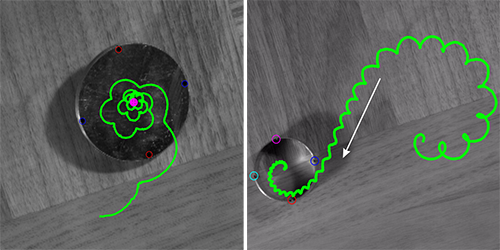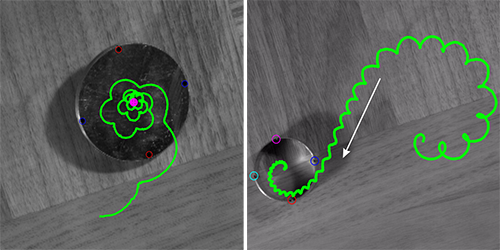Dance of the Wedding Rings
A coin spinning on a flat surface spirals like a planet around a star until it falls on its side, rattles, and then abruptly stops. But Mir Abbas Jalali from the University of California, Berkeley, and colleagues have shown that twirling wedding rings follow a different dance. Shortly after a ring is set spinning, its path can take a sudden turn and the ring starts spiraling in the opposite direction, like a boomerang. The authors suggest this finding could be used to design objects that move over surfaces with complex reorientation capabilities.
Using high-speed imaging, Jalali and co-workers recorded the spinning motion of rings with different radii, widths, and thicknesses as they moved across various types of surfaces. They observed the same abrupt path turn in all of the experiments. Their numerical calculations suggest that this turn comes from a change in the ring’s air resistance shortly after it starts spinning.
When a coin spins, a thin layer of air gets trapped between its bottom edge and the surface on which it twirls. The same air layer appears when a ring is set spinning, but because of the big hole in the ring’s center the air can escape by flowing through the hole. This flow changes the frictional forces acting on the ring, causing a switch in its direction of motion. According to the authors, the ring can be likened to an object orbiting the Earth that is suddenly trapped by the moon’s gravitational field, becoming its satellite.
This research is published in Physical Review E
–Katherine Wright





